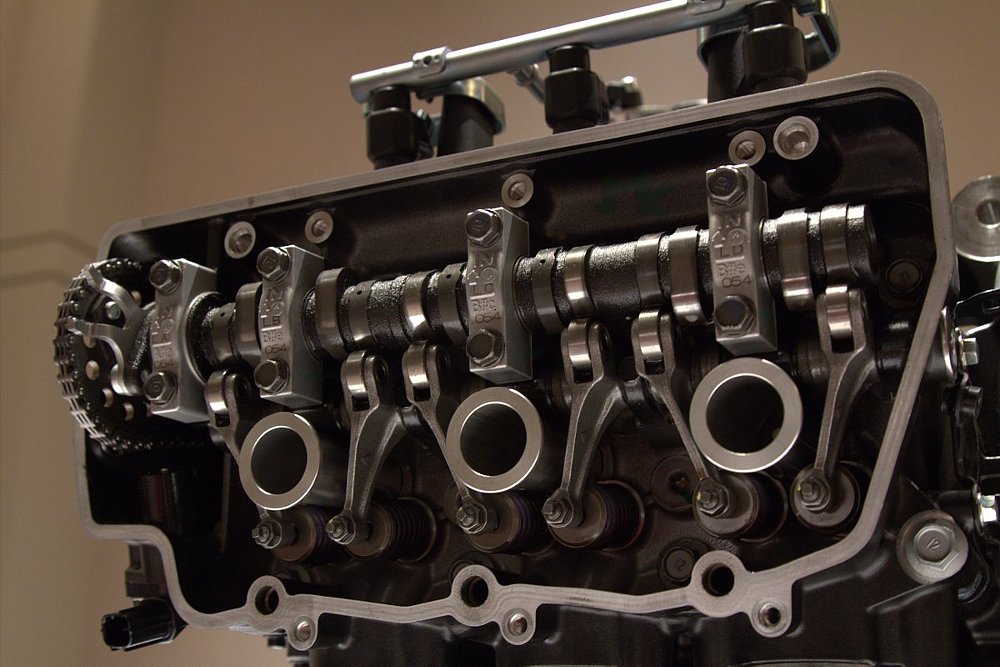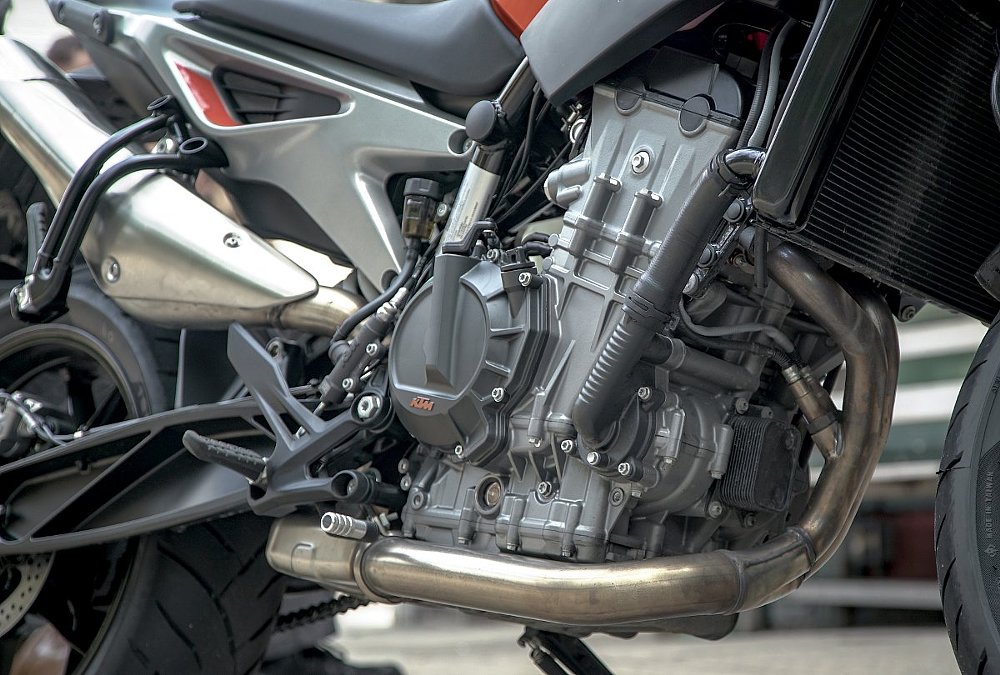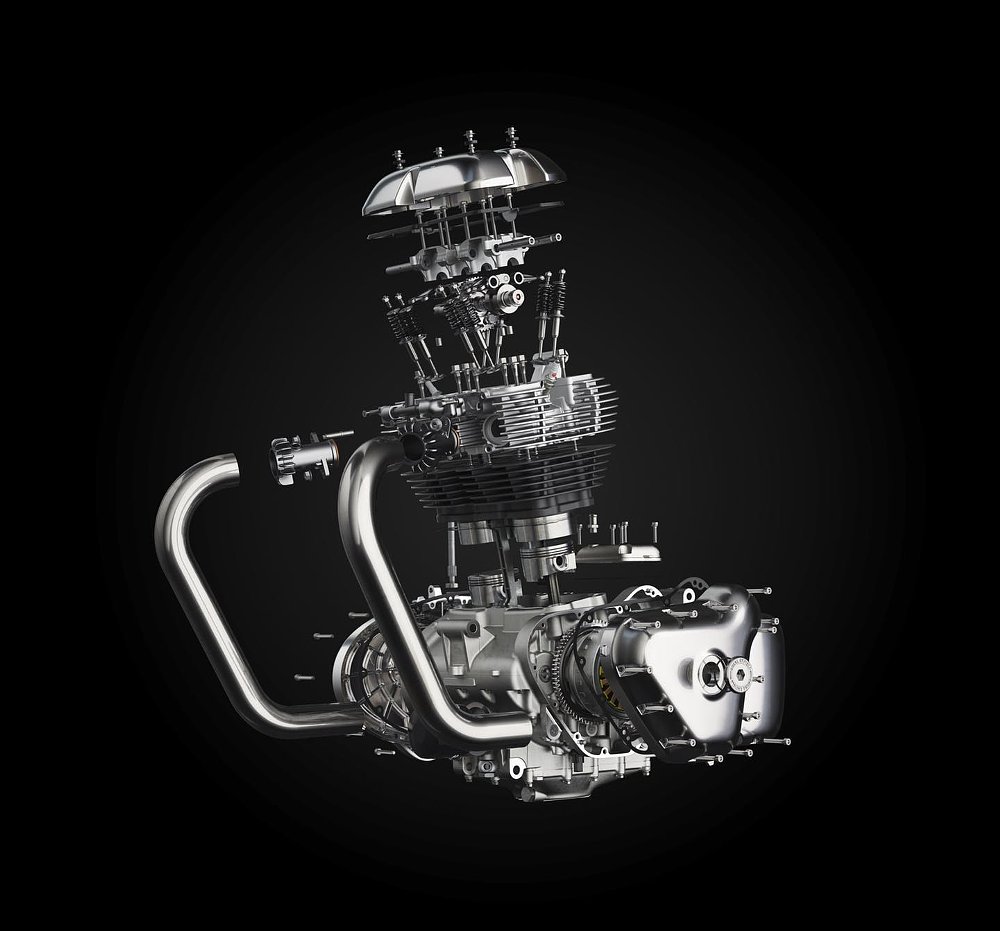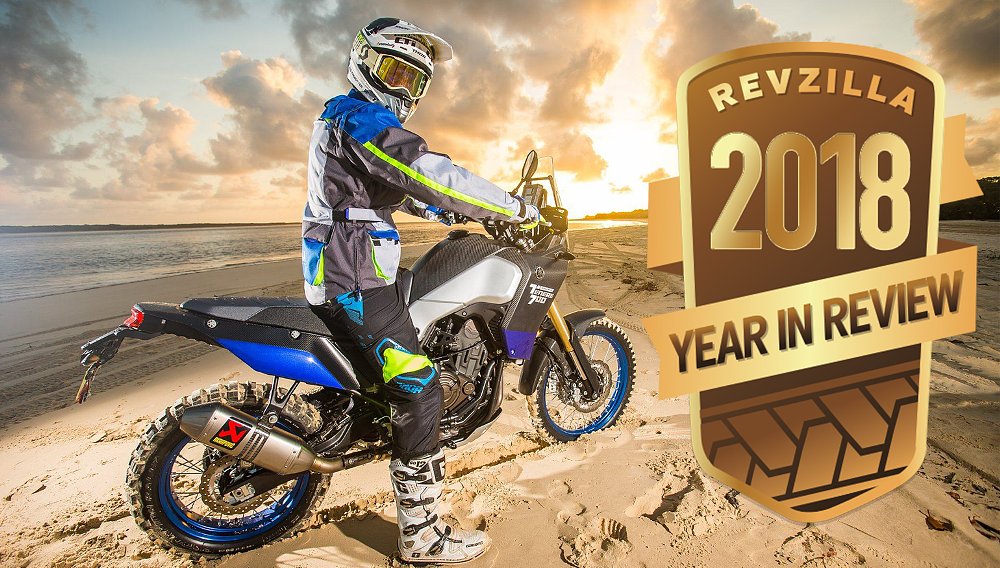As I’ve said before, the engine of a motorcycle is the only individual component important enough to be included in the name of the vehicle.
They’re a big deal. Engines determine, in large part, the capability, personality, and in many cases, the general “feel” of a motorcycle. In this article, I’m going to break out a few of the engines we saw for 2018 I felt were notable. Note that I’m only gunning for engines that were introduced in 2018, because I think I’d have too many wonderful options if I didn’t.

Honda’s new flat six
This is almost a gimme putt. The first new bike I rode in 2018 was a new Gold Wing, and while the engine might appear to be the same as the outgoing pancake, it’s not. Displacement barely changed at all, but Honda “squared” the engine, making the bore and stroke equal at 73 mm. (This was previously an oversquare engine.) Compression was inched upwards to 10.5:1, and the heads are four-valve units compared to the old two-valvers. The engine and trans package together lost 13 pounds over the outgoing engine, and it’s also more than an inch shorter fore to aft than the previous iteration. The powerplant also lost its cables, becoming a throttle-by-wire setup this year. Power peaks at 126 ponies and torque is a very respectable 125 foot-pounds.
The engine received Honda’s Unicam system, which utilizes a single camshaft that actuates the intake cams directly, but uses finger-follower rockers on the exhaust side. This, to me, is pretty awesome. It allows an aggressive cam profile to be used on the intake side of the equation, but by using locknut-style adjusters on the exhaust (the valves that are most likely to recede deeper into their seats due to heat), most owners will only check the difficult-to-adjust valves and expend far less effort actually resetting tappet clearance on the easy-to-adjust ones. And since this is a boxer, the valve check we all get stuck doing (or paying for) is as easy as it could be. (I shudder at the thought of doing the same job on an inline-six configuration, something I’ve not ever had to do.)
The new Wing engine makes more power, is lighter and smaller than its predecessor, and has a maintenance schedule that will be friendly to those likely to really pack the miles onto the style of bike you’ll find this engine tucked into. That’s award-worthy in my book.

KTM’s parallel twin
It’s not often I can fall hopelessly in lust with an engine after one mile, but it happened on the KTM Duke 790. (Actual displacement is 799 cc.) Spurg told me the bike was incredible, and it is. That bike has a lot going for it in terms of chassis, but to me, the mind-blowing part is the engine. It’s powerful, light, and compact. The engine is oversquare, which helps the bike achieve a 10,000 rpm redline. Getting 103 horsepower and 64 foot-pounds of torque from a mid-size twin pretty much blows out the competition (SV650, Z650, FZ-07), albeit at a higher price. Of course, to get that type of output, the engine’s construction must be (and is) very modern — the 790 features dual cams and four valves per cylinder. Throttle-by-wire and twin balancer shafts contribute to the “gee-whiz” factor, as well.
In the short time I was on the KTM, I was wowed by the nimble chassis and suspension, but the power and smoothness of this engine cannot be overstated. I couldn’t help but think about how things have changed as the sands of time have slipped through the hourglass: Here’s a powerplant that’s half the size of some across-the-frame fours of yesteryear that makes twice the power.

Royal Enfield’s parallel twin
So after that last two-holer, you might be wondering how in tarnation I’m gonna trot out a second twin that’s slightly smaller yet makes only 47 horsepower and 37 foot-pounds of torque. That’s a fair question — if performance was the only characteristic upon which engine “goodness” is determined. The reality is that most riders, myself included, are prone to anthropomorphize machinery, and the mill between a set of frame rails doesn’t escape that action.
So we’ll address a bit of that first. The 648 cc twin has a 270-degree crank, making this engine a bit more disposed to making torque rather than eking out horsepower. It is oil- and air-cooled, so the cooler is pretty easy to overlook, and the cylinders and heads require the deep, heavy finning they have. The side covers are hand-polished aluminum. This engine is unabashedly quaint. The motor has a single cam and is fuel-injected, so it’s not completely archaic. I’d postulate that this is an excellent foundational engine for someone who wants to learn how to wrench on their bike without buying a non-running project.
Some will mention that a downside to that quaintness: Those 47 horses seem a little anemic from a six-fiddy twin, right? I think there’s an explanation for that. In Australia, the LAMS (Learner Approved Motorcycle Scheme) specifies bikes meet a certain power-to-weight ratio. (No more than 150 kW per tonne, or 201 hp to 2,204.6 pounds. Less confusingly, a good rule of thumb is that a motorcycle needs to make about one tenth in horsepower what it weighs in pounds.)
But this engine has more in it. The LockStock, a factory skunkworks bike, was reputedly bored to 865 cc, and the 9.5:1 compression was raised to 12.4:1. Heads were ported and flowed, high-flow injectors and throttle bodies were fitted, as well as a hotter cam. A little sniff of nitrous helped the bike spin the dyno with over a hundred horsepower. Assuming a 10 percent drivetrain loss, that would be 110 horsepower or so at the crank.
Now, a 12.4:1 CR drinking from a bottle is certainly not appropriate for street use. However, S&S was involved in that engine build (and the one for the the Bonneville Salt Flats bike you can see on that same page), so I don’t think it’s hard to imagine some engine hop-up parts being created for the platform. It’s hardly difficult to envision an owner loading in some 11:1 pistons, a hot cam, an intake and exhaust, and giving an Interceptor or a Continental a quick retune. Results could easily be something along the lines of 70 to 80 horsepower at the crank. Heck, it wouldn’t surprise me if a “XXX-many-horsepower” kit was released by S&S for the double-barrel Enfield at some point.
That would make a fine experimental platform for an adventurous tinkerer, in a bike whose price is likely to be significantly less than similarly wrench-friendly bikes like a Sportster or one of Triumph's Modern Classics. The engine has a very traditional appearance and enough modernity to stay relevant. I think of it as a nice bridge between old and new.
I think those are a few of the internal combustion highlights of the year. I’m looking forward to what 2019 has in store. The Indian FTR1200 powerplant has me fired up, and I’m intensely curious to see how the new flying vee Guzzi packed into the V85 TT will perform — and of course there’s bound to be one or two surprises, too!












